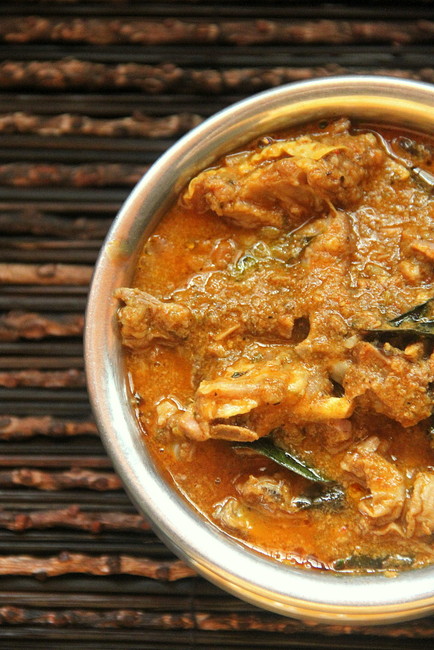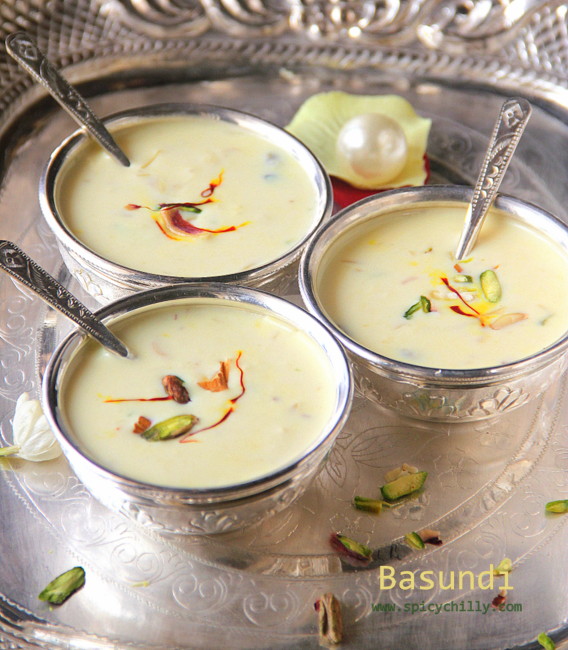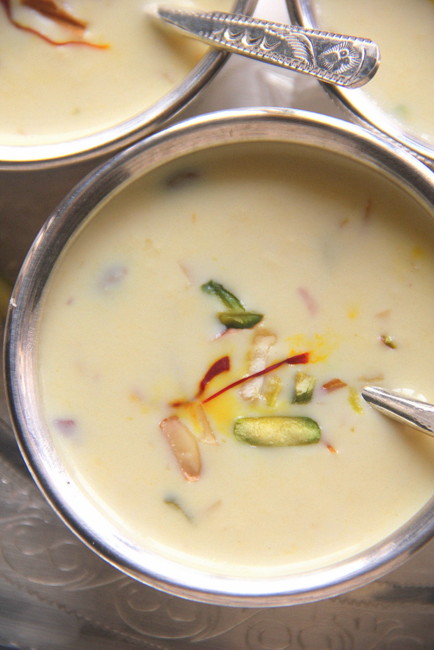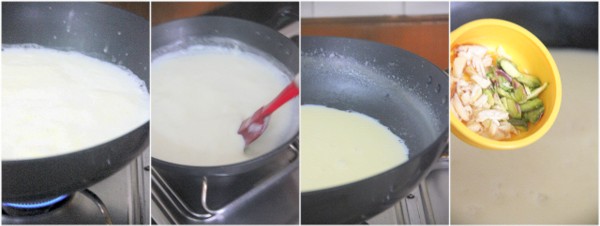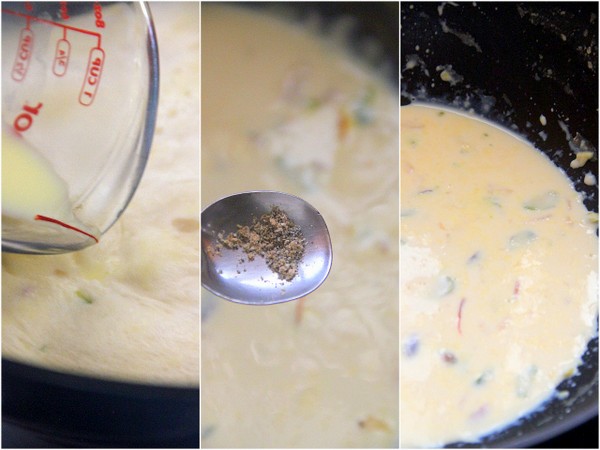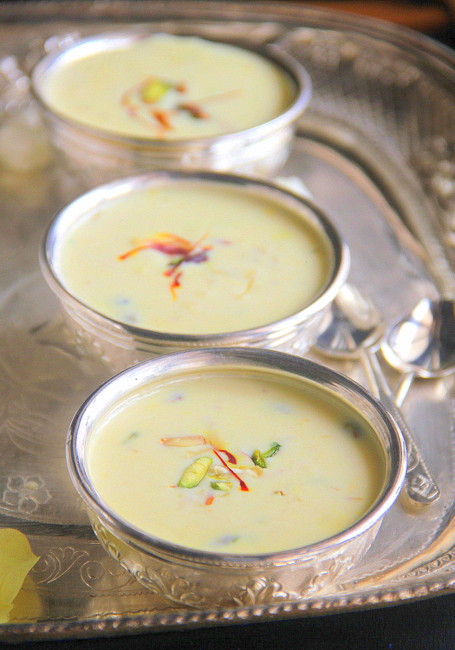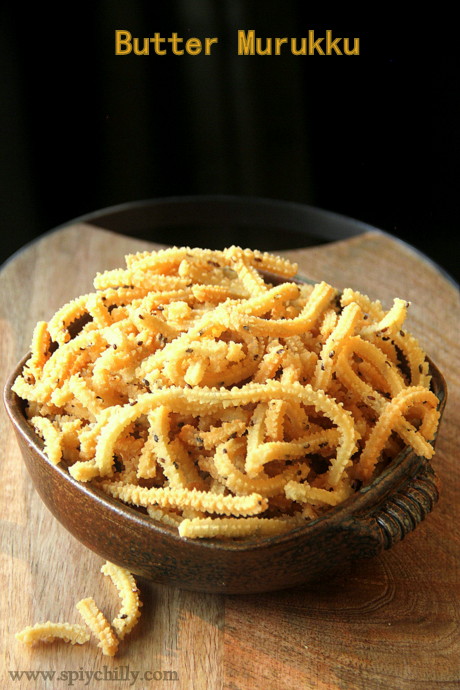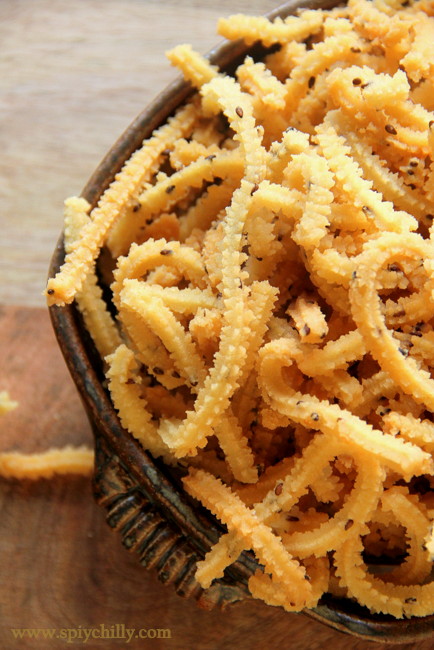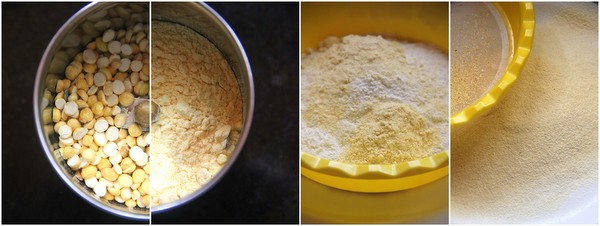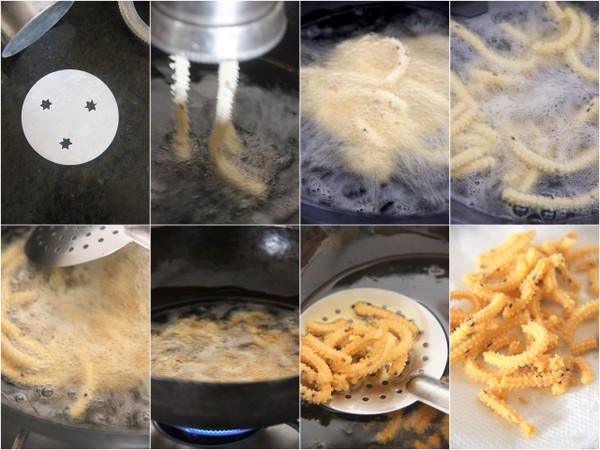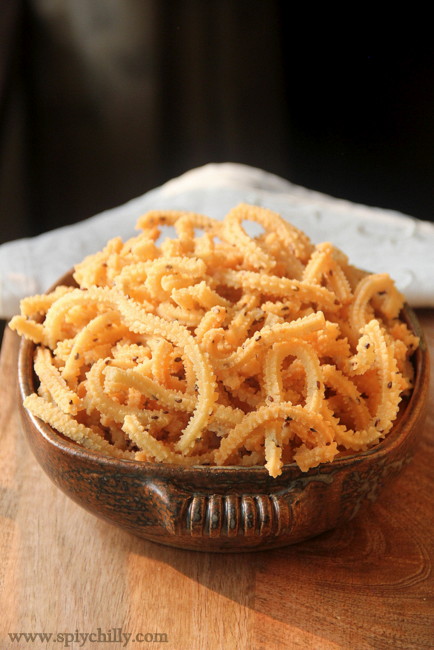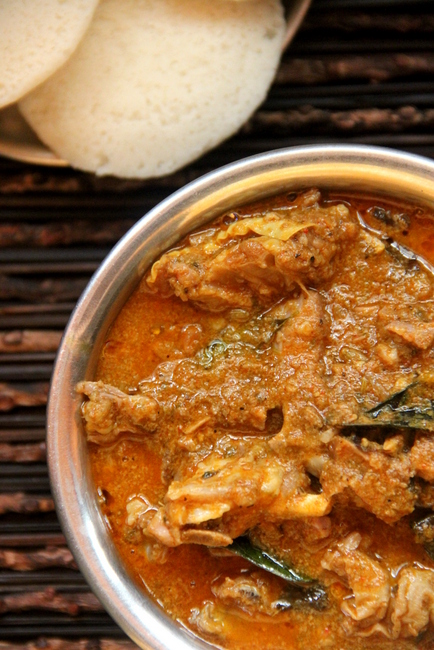
While all the Hindu festivals are related with feasts, sweets, snacks and goodies of whatever kind, it has to be all of vegetarian origin. Plants, leaves, flowers and fruits. But this festival Deepavali or Diwali has an 'excuse'. The Tamilians, especially, the Southies cook lamb on this day and serve for breakfast as Mutton Kuzhambu and/or mutton biriyani for lunch/dinner.
Back in my parents' home, amma used to make mutton thovaram, an amazing sidedish made with pieces of boneless mutton cubes sauteed to perfection with coconut and jeera with a touch of chillies. I had seldom celebrated Diwali with my parents ever since my marriage and had been continuously missing out on these delicacies! Here in my family, my in-laws follow a much traditional pattern, holding strictly, the vegetarian concept! Mutton and Deepavali put together is considered blasphemous ;)..though V smiles at the disappointment I have every time, every year on the D day :). To top the bad luck, the full moon day or the amavasya fell on the same day calling for feasts made with country vegetables even with no onion and garlic and sans 'English kay' like beans, carrots, potatoes... :)
I always wished to source out a South Tamilnadu deepavali mutton recipe and recreate for my space. This recipe is from Eshwari my friend, who hails from down South and makes this authentic Virudhunagar style dish for her family, every Diwali morning!
I should admit, this dish is one of the authentic mutton curries, I have tasted; with that balanced taste and aroma of the cinnamon and fennel, subtly dominating the combined flavours of ginger garlic with a touch of earthiness contributed by the lastly stirred in, mildly roasted and crushed jeera n pepper powders! What I really loved with this recipe is the generous addition of pearl onions and the final cooking in coconut milk! Irresistible!
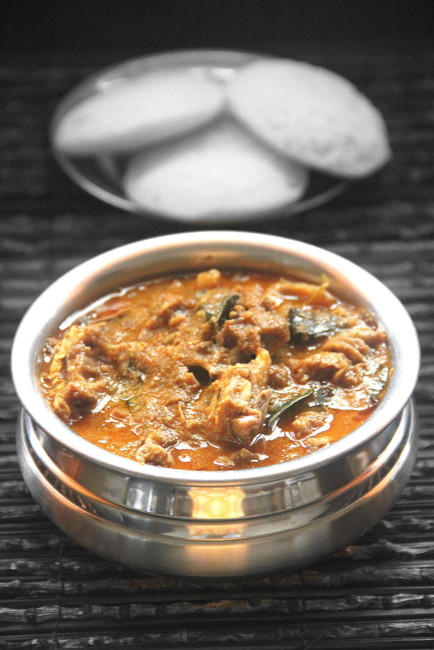
Virudhunagar Deepavali Mutton Kuzhambu
Prep time- 20 mins
Cooking time-40 mins
Total time needed- 1 hr
Serves 3
You Need:
1/2 kg Mutton / Attukari with bones, cut into small pieces
1/4 tsp turmeric powder
To dry roast
1/2 tsp coarsely crushed pepper corns / milagu
1/2 tsp coarsely crushed Jeera / jeerakam
A sprig curry leaves
To season
3 tbsps Sesame seed oil / Nallennai
1/2 tsp Fennel seeds / Sombhu
1 inch pc Cinnamon /pattai, crushed coarsely ( I used Ceylon Cinnamon / Surul Pattai )
1/2 tsp crushed ginger / inji
1/2 tsp crushed garlic /poondu
Chopped pearl onions / chinna vengayam, enough to fill a 200 ml cup
2 green chillies, sliced lengthwise
2 tbsps red chilly powder / milagai thool
1/2 tbsp coriander powder / malli thool
A sprig curry leaves / karuveppilai
A fat pinch of turmeric powder
7-8 cilantro / malli thazhai, whole herb, roots removed
1 tsp Kosher salt / Kallu uppu
Method:
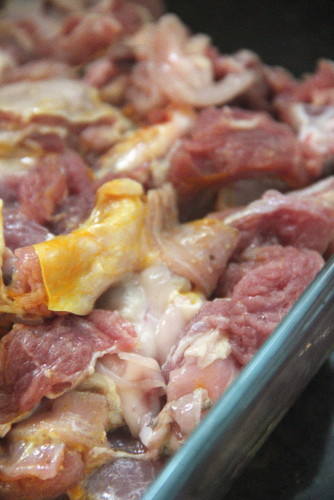
Wash and drain the meat pieces. Blend along 1/4 tsp of turmeric powder. Let it stand for at least 30 minutes.
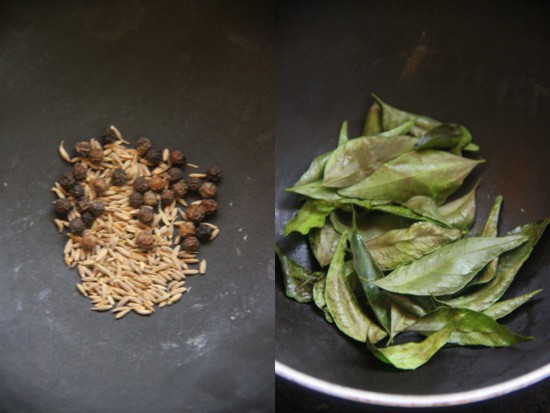
Dry roast pepper corns and jeera for a minute until the aroma emanates. Remove and roast the curry leaves in 4 drops of sesame seed oil. Remove and keep aside. We are going to use it for garnishing.
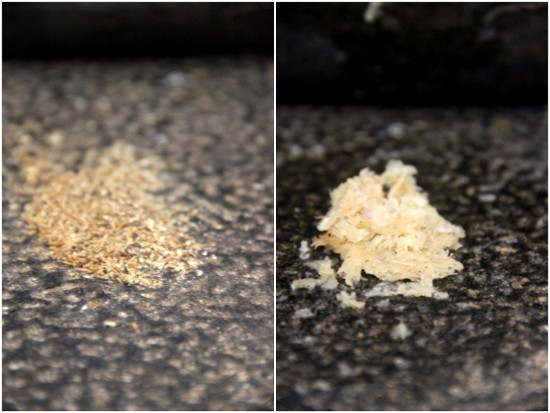
Coarsely grind of pulse the jeera and pepper in your mixer. Crush ginger -garlic as well. You can also use ginger garlic paste. I used my stone mortar (ammikkallu).
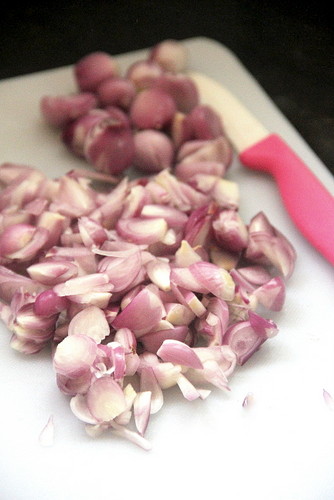
Chop pearl onions lengthwise, thin. Keep aside.

Heat 3 tbsps sesame oil in a wide thick bottomed kadai. Throw in crushed cinnamon ( Ceylon cinnamon is brittle and has a milder flavour. It can be crushed with finger tips too ) and fennel seeds. Saute sliced small onions. While golden brown, add the fresh sprig of curry leaves ( not the roasted ones ) and the ginger garlic paste. Saute for a minute.
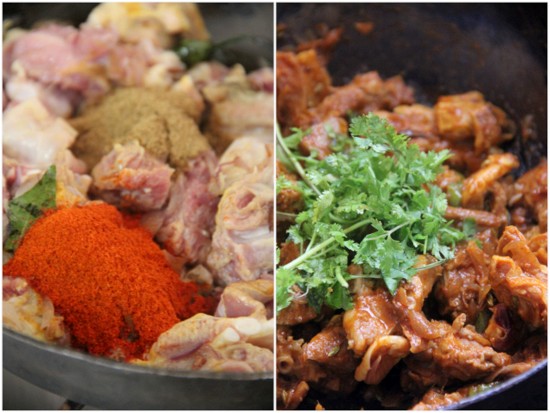
Now add the red chilly, coriander and the turmeric powders along with the salt. Mix well and heat up the whole thing to blend well in low flame for 3 minutes adding the cilantro. No need to chop the herb, leave them a bit long.
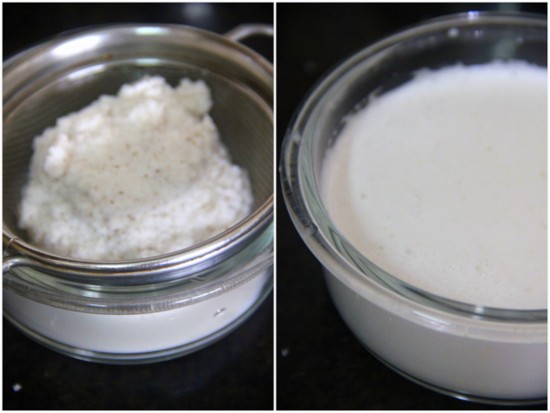
Extract 250 ml coconut milk from the grated coconut. You need not separate 1st and 2 nd milk or thick and thin milk. Just have them together in medium thickness.

Add along the curry. Mix well and transfer to a pressure cooker.
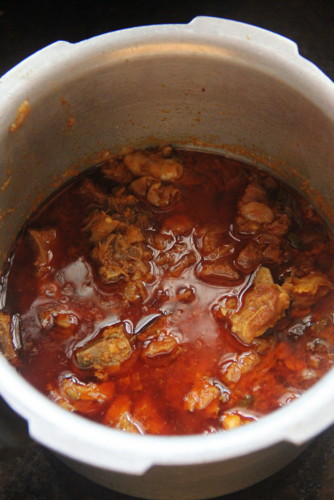
Cook in full flame until one whistle. Lower the flame to minimum and keep on fire for 20-25 minutes or until the chunks are cooked soft! Open. Voila !! You are sure to confront a sexy red curry topped with oil ;) with a full blast aroma! Slide out a piece of meat and check the doneness. If not, give a stir and return to the stove top and cook for some more time. You need not add any water.

Throw in the roasted curry leaves, along with the powdered cumin and pepper. Stir gently to combine. Check salt at this point. Transfer to a serving bowl. Your Virudhunagar Mutton Kuzhambu is all ready to be served hot with idlies or dosas.
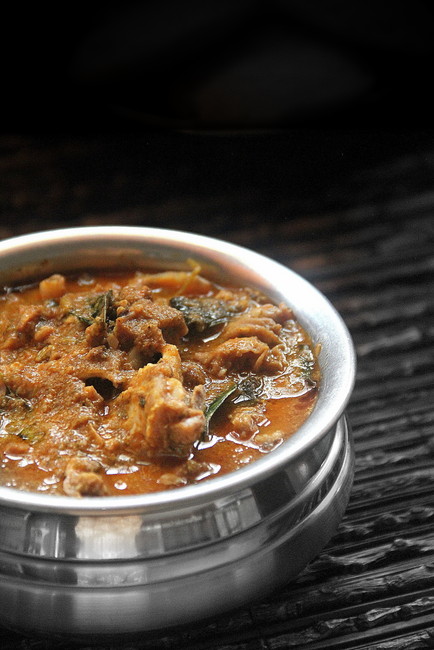
Note:
- This recipe calls for sesame seed oil or nallennai for the authentic taste.
- Do not compromise on the onions. Yes, it has to be small onions / pearl onions which fills loosely a 250 ml cup so that once sliced it yields a 200 ml cup.
- I have used freshly extracted coconut milk from freshly grated coconut shavings. You may use canned milk or 3- 3.5 tbsps of coconut milk powder mixed in warm water. The whole idea is to have a medium thickcoconut milk.
- The amount of ginger garlic paste is lesser when compared to meat curries in this one. This is to bring out the flavour of spices! Do not skip the final addition of the roasted n crushed cumin-pepper mix. My friend insisted on rock salt / Kosher salt / 'kallu uppu' instead of the regular table salt. Seems this salt combined with the spices add to the authenticity of the dish!
